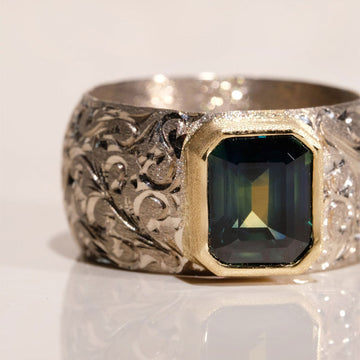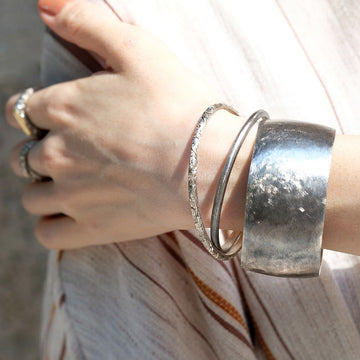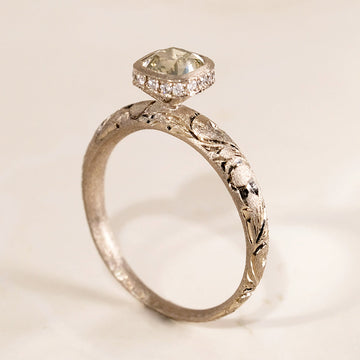My first overseas business trip since the brand's relaunch was to Mumbai.
As briefly shared on Instagram, I visited Mumbai, India in mid-February.
I stayed for about a week—an intense visit focused on sourcing diamonds and attending a gemological lab class at GIA.
GIA stands for the Gemological Institute of America, a globally recognized gemological institution. In addition to gemstone identification and certification, GIA conducts research and education in the field of gemology.
While its headquarters are located in Carlsbad, California, GIA also has campuses in Mumbai, Bangkok, and Hong Kong. There used to be a campus in Japan, but now only the laboratory operations remain.

The magnificent Chhatrapati Shivaji Terminus—a UNESCO World Heritage Site
Mumbai is about an eight-hour direct flight from Narita. The city is home to many businesses, and its central areas are a mix of modern skyscrapers and colonial-era architecture.
From early morning to late at night, the city bustles with traffic and people. You can see local women confidently walking in sleeveless dresses and heels, and there are familiar chains like Starbucks and McDonald's. It's a very modern atmosphere.

The jewelry industry here is also thriving—especially diamonds. Like Tokyo’s Okachimachi, Mumbai has a dedicated diamond district, filled with buildings housing every imaginable type of diamond business. The scale of it is truly overwhelming—"As expected from the land of gems...,” I found myself murmuring in awe.
Security is tight. Unlike Okachimachi, which has stores open to the public, these buildings only allow entry to those with appointments.
Some of my classmates in the lab course worked for companies located in that diamond district.

If my stay is just two or three days, I opt for a hotel. But for longer trips, I prefer accommodations with a kitchen—eating out every day can be exhausting.
This time, I was able to rent a condo unit near GIA via Airbnb, which made commuting easy.
I left on Sunday morning, arrived that evening, and began the lab course first thing Monday morning.
Unlike in the past, using Uber meant I didn’t have to haggle over taxi fares—it really made travel much more convenient.
The lab course I took was focused on diamonds. Using large microscopes, we studied how to analyze diamonds—looking at clarity, color, fluorescence, and more.
This is part of what's known as “grading.” You may have heard of the 4Cs in diamond evaluation: Clarity (types and placement of inclusions), Color, Cut, and Carat (weight). These are a kind of common language in the industry and play a crucial role in communication during sourcing.
This course was all about gaining hands-on experience to be able to perform this grading ourselves.

Each student had their own microscope for hands-on diamond analysis during class
GIA runs multiple courses simultaneously, and during breaks, everyone gathers in the break room. With so many people, the scene felt a bit like a prep school.
Each classroom had a name—like the Emerald Class or Pearl Class—with different lessons taking place in each. I was in the Emerald Class, which had two instructors (including an assistant). Classes started at 8:30 AM and ran until about 5:00 PM, with just two 30-minute breaks.
Everyone was highly motivated to learn—constantly asking the teachers questions. I had to stay on my toes just to keep up.
Although I expected international students, it turned out I was the only foreigner. Most of my classmates were from the jewelry industry—some were diamond dealers, others worked at major manufacturers handling both watches and jewelry.
There were also professionals from upstream sectors like mining and production—not just sales.
Since the instructor asked, “Who doesn’t understand Hindi?”, the class was conducted in English. But in one-on-one interactions, some students used Hindi.
Given that students had gathered from across India—and even abroad, like Dubai and the UK—some spoke languages like Tamil, not just Hindi.
Break times were a fascinating blend of languages, with bilingual classmates jumping in to interpret, English mixing in, and the room buzzing with India’s signature diversity.

I rented a room with a kitchen and brought lunch to class each day
Most students stayed in hotels and couldn’t prepare lunch, and with different religious dietary restrictions, the school managed lunch orders based on individual requests.
At lunchtime, various lunches arrived on the tables, each according to the students’ orders.
I brought my own bento, but classmates kept offering me their food—dishes I would never have tried otherwise—making every lunch feel like a feast.
Breaks and meals provided the best chances for candid conversations, since most of us were in the jewelry trade. For me, these moments were just as valuable as the class itself.
The jewelry industry is vast and segmented—from mining to retail. As someone who runs a brand, I interact with suppliers, artisans, and retailers, but I rarely get to meet people who work in mining or gemological research.

One thing is certain—everyone loved to talk!
The break room had a coffee machine, hot milk, and several types of tea. After lunch, nearly everyone made chai and engaged in lively conversation. I soon found myself doing the same—making chai and joining in. Every day passed in a flash.
I passed the final exam and, unlike digital PDFs, receiving a printed certificate in a black frame felt substantial—I found myself gazing at it with quiet satisfaction.
I’ll likely take two more courses this year or next, and I’m already looking forward to the next time.

The next journal will cover our sourcing trip to Surat.







